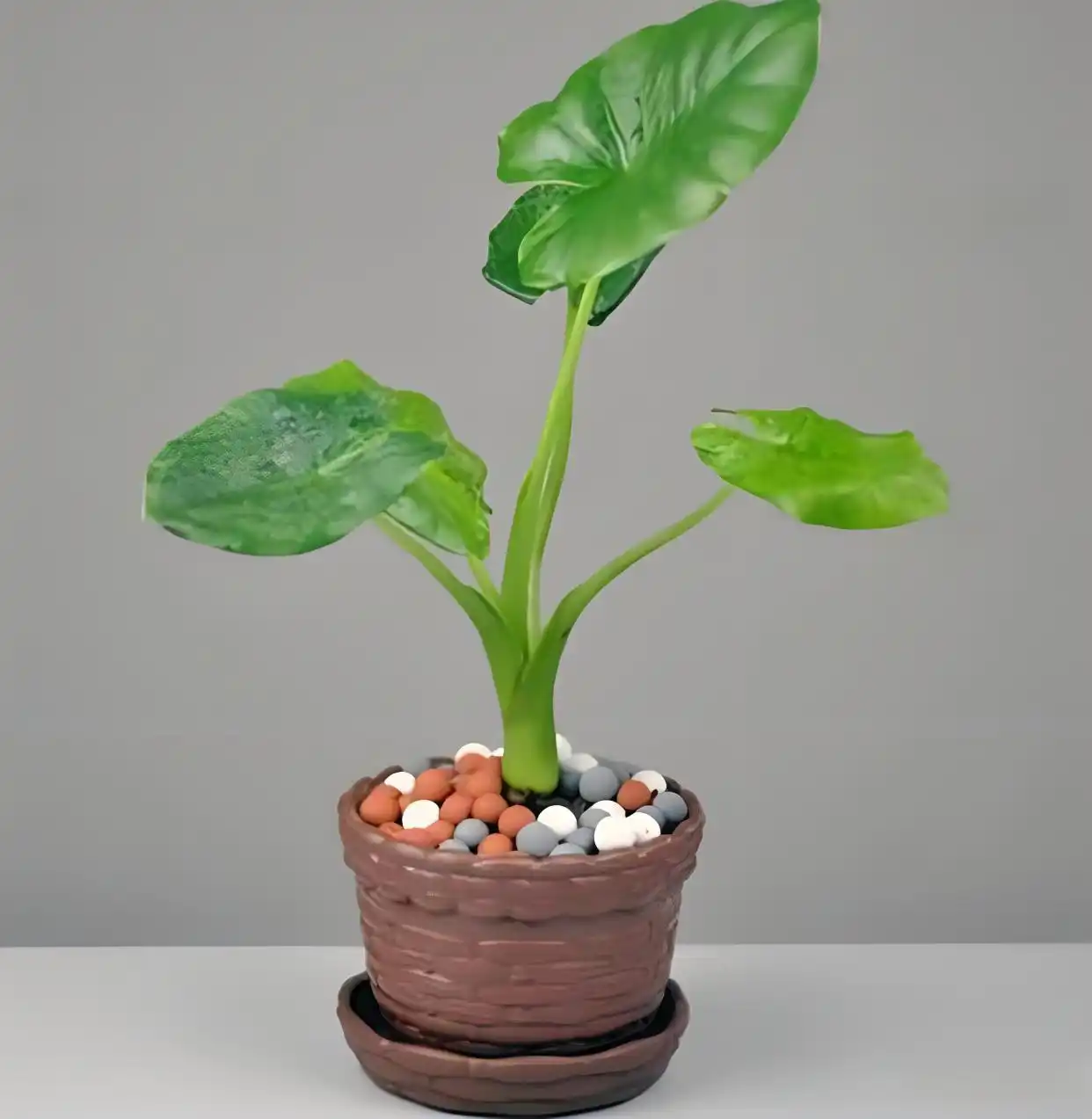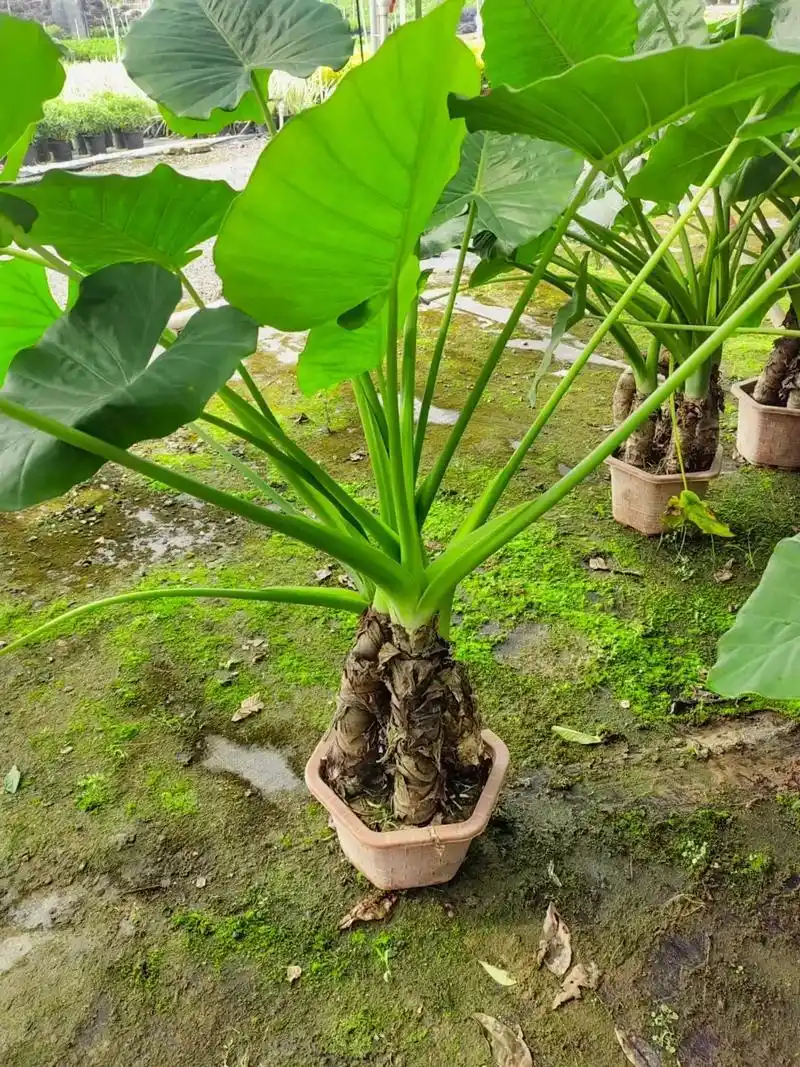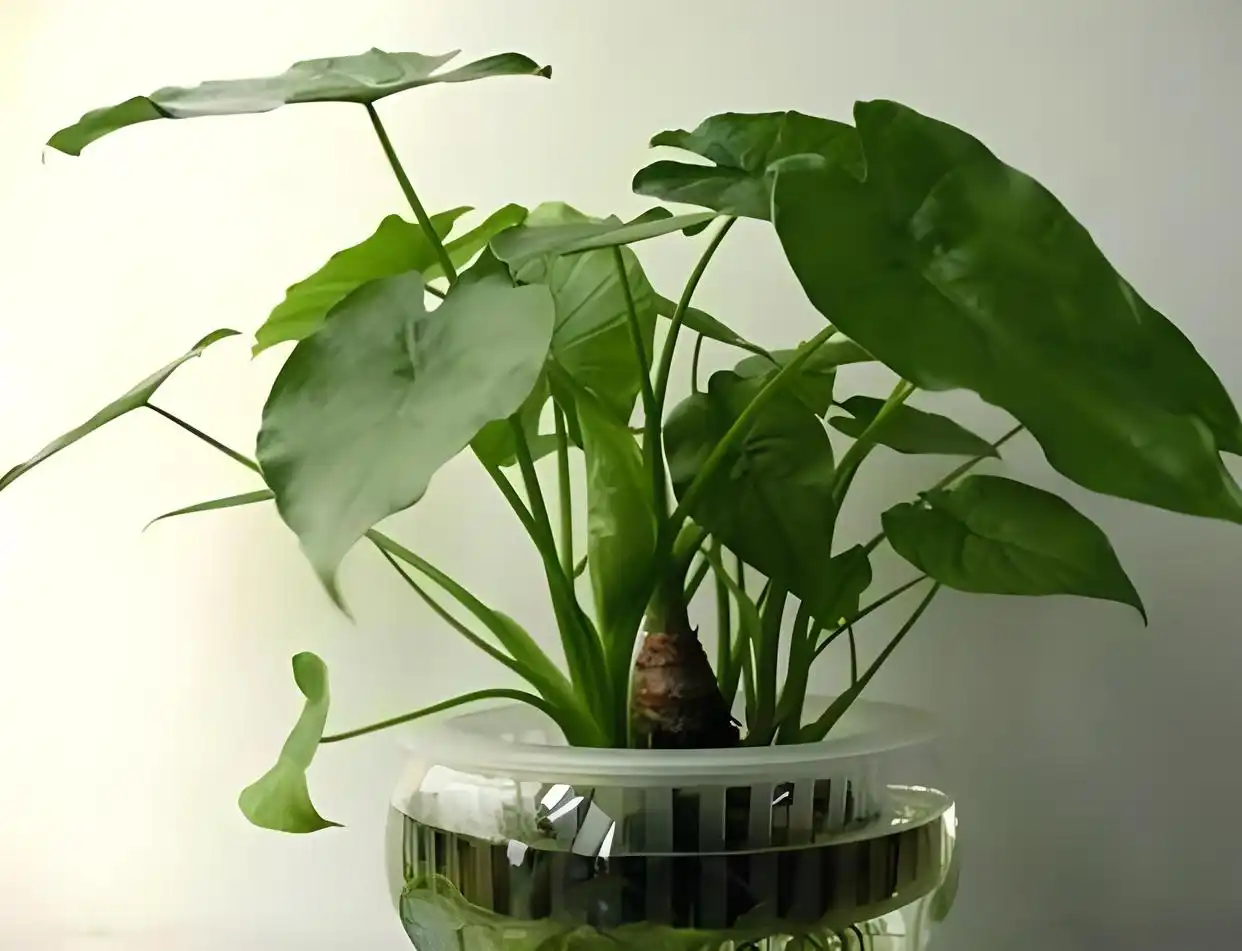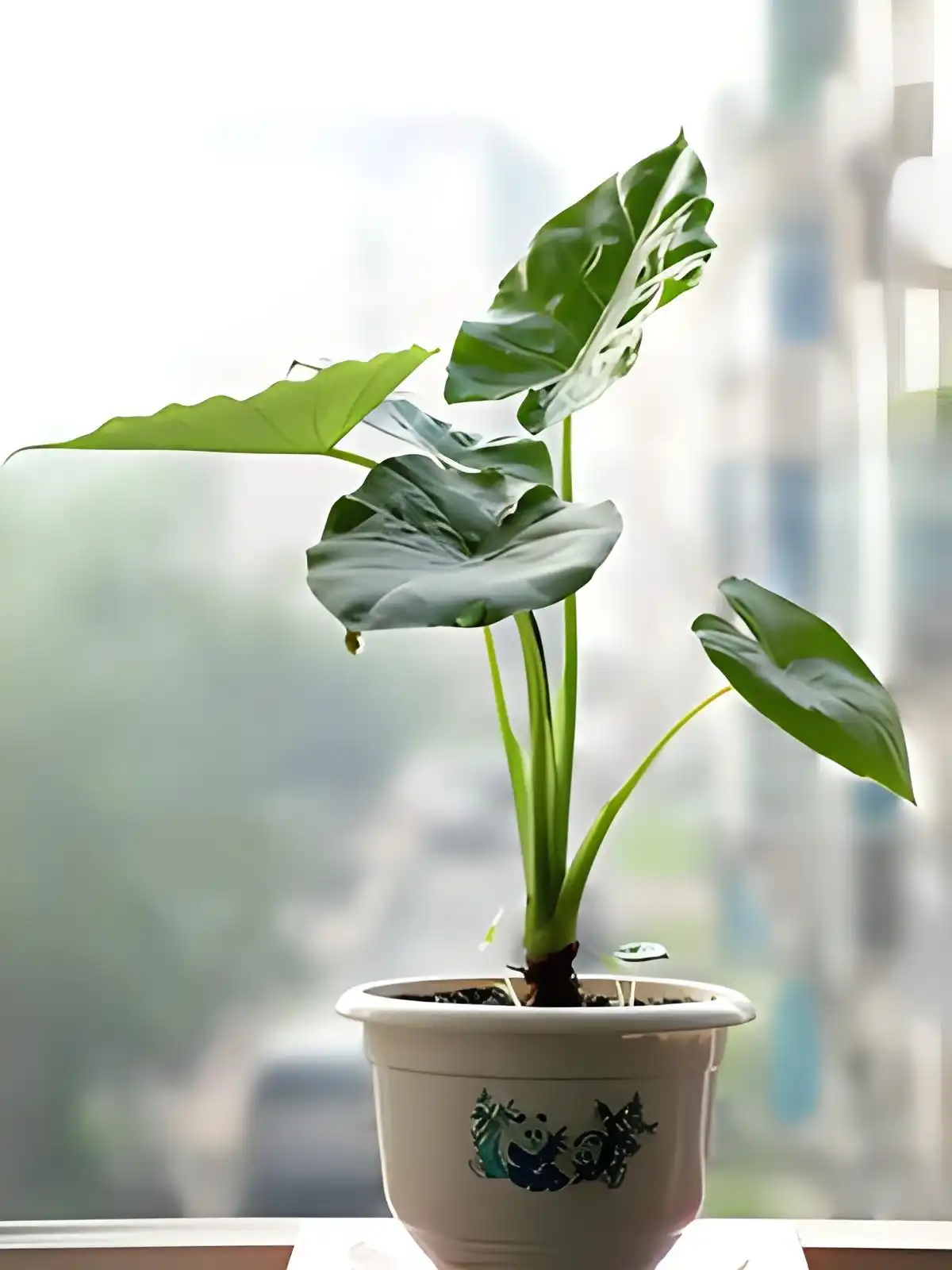To ensure the flourishing growth and dense leaves of Alocasia macrorrhiza, scientific maintenance should be carried out from six aspects: light, water, soil, fertilization, pruning, and pest control. The following is a specific maintenance guide:

1. Light management: scattered light is the main focus, avoid direct sunlight
Suitable lighting environment
Optimal lighting conditions: Alocasia macrorrhiza prefers semi shaded environments and should be placed indoors in bright scattered light areas, such as living rooms, east or north window sills, to avoid direct sunlight burning the leaves.
.
Seasonal adjustment: Shade 50% -70% in summer, and increase the duration of light appropriately in winter, but avoid strong midday light.
.Case reference: If there are focal edges or yellow spots on the leaves, it indicates excessive light exposure;
; If the stem is thin and weak, and the leaves turn yellow, it may indicate insufficient light.Measures to deal with insufficient light
Regularly rotate the flowerpot to ensure that the plants receive even light.
.LED full spectrum lights can be used as plant fill lights to supplement lighting for 4-6 hours per day.
.Light management: scattered light is the main factor, avoid direct sunlight
2. Moisture control: keep moist and avoid water accumulation
Watering principle

Frequency: water thoroughly every 3-5 days in spring and autumn, once a day in summer when it is hot, in the morning and evening, and reduce to once a week in winter.
.Judgment method: Insert your finger into the soil for 2-3 centimeters. If it is dry, water it.
; Or observe the leaves and replenish water promptly when they slightly droop.Precautions: Avoid "half cut water", that is, when the topsoil is wet and the subsoil is dry, it needs to be poured to the bottom of the basin for water seepage.
.Humidity management
spray humidification: spray water 2-3 times a day to the leaves and surrounding areas to keep the air humidity 60% -80%.
Tray water storage: Place a water tray at the bottom of the flowerpot, cushion it with small stones for isolation, and increase local humidity through evaporation.
.Moisture control: Keep moist and avoid water accumulation
III. Soil preparation: Loose and breathable, slightly acidic substrate

Recommended formula
Basic formula: humus (or peat soil) 50%+perlite (or river sand) 30%+coconut coir 20%.
. Advanced formula: peat soil 40%+pine needle soil 30%+coarse coconut shell 20%+vermiculite 10% (to adjust breathability). Key indicators: pH value 5.5-6.5, EC value ≤ 1.2, avoid excessive salt content.Pot changing tips
Frequency: Change pots every 1-2 years, with the best time being before the spring sprouts.
.Operation points: Keep 1/3 of the old soil, trim the old roots and replace them with new soil, and water the roots thoroughly.
.Soil preparation: loose and breathable, slightly acidic substrate
4. Scientific fertilization: apply thin fertilizer frequently, with nitrogen fertilizer as the main fertilizer
Fertilizer selection
Growth period from April to October: apply high nitrogen compound fertilizer once a month, such as Huaduoduo 10;
; Or spray 0.1% urea solution once a week. Dormancy period from November to March: Stop applying chemical fertilizers and apply thin cake fertilizer water once a month. Dilute 10 times after maturity. Foliar fertilizer: Spray 0.1% potassium dihydrogen phosphate once a month to promote oil green leaves.Fertilization taboos
Avoid using unripe organic fertilizers that burn roots.
. Stop fertilizing when the summer high temperature is above 35 ℃ and the winter low temperature is below 10 ℃.Scientific fertilization: apply thin fertilizer frequently, with nitrogen fertilizer as the main fertilizer
Fifth, pruning and reproduction: optimize plant shape, promote branching
Pruning points
Dried yellow leaves: timely cut off to avoid nutrient consumption.
.Long branches: Cut off the top 1/3 to promote lateral bud germination.
.Styling pruning: Over dense branches can be pruned every spring to enhance ventilation and light transmission.
.Propagation method
Splitting method: When changing pots in spring, separate the rooted lateral buds and plant them separately.
.Cutting method: Cut robust stem segments with 2-3 bud points, air dry the wound, insert into vermiculite or perlite, maintain humidity, and root for 2-3 weeks.
. Pruning and propagation: optimize plant type, promote branchingVI. Disease and pest control: prevention first, comprehensive management
Common diseases and prevention
Leaf spot disease: brown spots appear on leaves, spray with 50% carbendazim 800 times solution once a week, three times in a row.
.Anthrax: Leaf edges are scorched and withered, controlled with 70% methyl tobramycin 1000 fold solution.
.Preventive measures: Strengthen ventilation and avoid long-term water accumulation on the leaves.
.Common insect pests and control
Red spider: white dots appear on the leaves, spray 2000 times of avermectin solution.
.Mesoscale insect: White wax appears on the stem, apply 25% thiamethoxam solution at 1500 times to the insect body.
.Physical control: Wipe the leaves with a damp cloth or rinse the affected area with clean water.
. Disease and pest control: prevention first, comprehensive management7. Precautions
Temperature management
The optimal growth temperature is 20-30 ℃, and it should be kept above 10 ℃ in winter to avoid frost damage.
. During high temperatures in summer, cooling can be achieved by sprinkling water on the ground or ventilating with fans.Avoid accidental contact
Alocasia macrorrhiza juice contains various toxic ingredients such as calcium oxalate crystals, hydrogen cyanide, and alkaloids. Ingestion or contact with the skin may cause discomfort and even poisoning. It is recommended to wear gloves for maintenance and keep it out of reach of children and pets.
. Conclusion: Through the above comprehensive maintenance measures, Drip Water Guanyin can significantly improve its growth status within 3-6 months, increase the number of leaves by 30% -50%, and make its plant shape fuller. If properly maintained, the plant height can reach over 1.5 meters and the leaf diameter can exceed 40 centimeters, resulting in excellent ornamental effects.